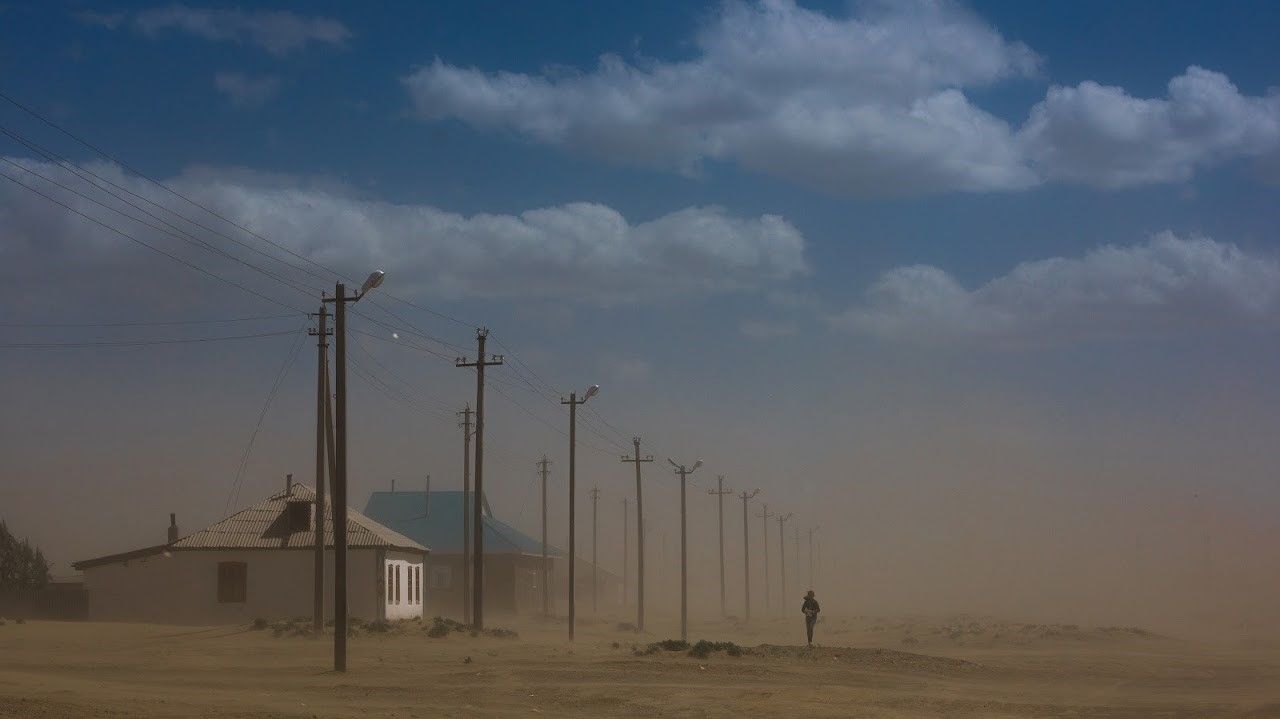
SDS in one of the villages of Central Asia
Photo by Konstantin Kikvidze (CAMP4ASB)
#UNCCD #Sandandduststorms #CAREC #SDS #CentralAsia
Sand and dust storms (SDS) are a combination of different hazards, such as sand dust and wind, that interact with each other and form a dangerous natural phenomenon. It is hard to figure out the exact intensity, magnitude and direction of SDS. This amplifies their potentially disruptive effect.
SDS are a problem of global significance. The United Nations Convention to Combat Desertification (UNCCD) classifies 151 of its country Parties as being directly affected by SDS. 45 UNCCD country Parties are considered SDS source areas. Widespread as they are, SDS can be aggravated by desertification, unsustainable land and water management, land degradation, greater drought frequency and other hazards. In addition to having a negative socio-economic impact on human health, water and air quality, agriculture and industry, SDS sometimes transport such pathogens as meningitis and valley fever.
In September 2019, the UNCCD COP 14 – a conference dedicated to discussing ways to control and reverse further loss of productive land from desertification, land degradation and drought – took place in New Delhi, India. During the Conference, UN agencies and international organizations established the United Nations Coalition on Combating SDS. The key objectives of the Coalition include:
- Preparing a global response to SDS, which would encompass a strategy and action plan
- Identifying entry points to support countries and regions affected by SDS;
- Preparing a platform for engaging with partners and enhancing collaboration among affected countries and the UN system;
- Providing a common platform for the exchange of knowledge, information and technical expertise;
- Identifying, mobilizing and facilitating access to financial resources for joint responses to SDS.
Ultimately, these objectives are designed to result in the development of a United Nations system-wide approach to addressing SDS. Furthermore, they are supposed to strengthen preparedness to SDS, enhance strategies for SDS risk reduction, and promote innovative solutions, advocacy and capacity-building efforts.
As part of its long-term strategy, UNCCD has stepped up efforts to address the negative impact of SDS in Central Asia, a region highly vulnerable to the hazard. Through its partnership with The Regional Environmental Centre for Central Asia (CAREC), UNCCD is supporting the countries of Kazakhstan, Kyrgyzstan, Tajikistan, Turkmenistan and Uzbekistan in developing and implementing risk reduction strategies for SDS at both national and regional levels. Within the project “Regional approaches in combating sand and dust storms and drought”, the UNCCD is facilitating cooperation between different stakeholders, including government agencies, academia, practitioners and local communities. Such an approach will help Central Asia enhance its resilience and preparedness to SDS.
Information about the Project:
In January 2020, in all five countries of Central Asia with the financial support of the Secretariat of the United Nations Convention to Combat Desertification (UNCCD) the project “Regional approaches in combating sand and dust storms and drought” was launched. The project is implemented by the Regional Environmental Centre for Central Asia (CAREC), which works in close cooperation with designated national institutions and UNCCD National Focal Points in each of five countries.
The main objective of the project is to assist Member States in improving their preparedness and resilience to droughts and FDP, and to enable coordinated action and data exchange at national and regional levels.
You can learn more about the Project and its activities here:
